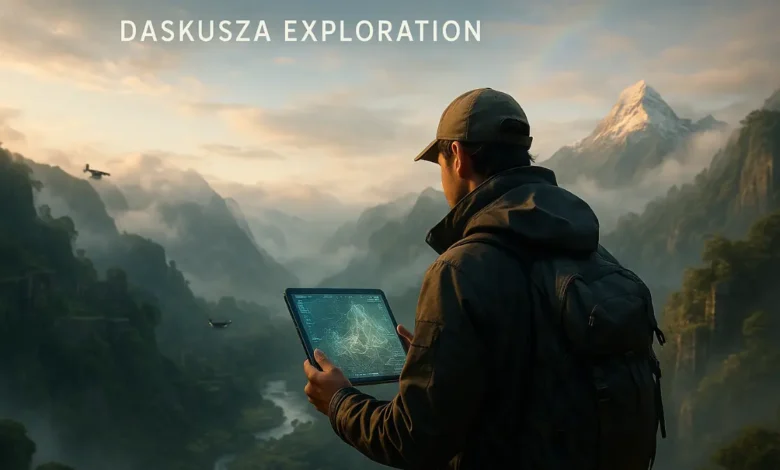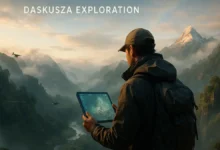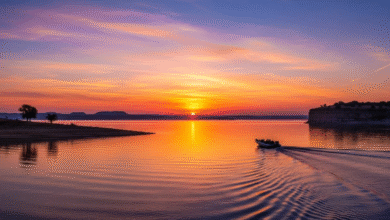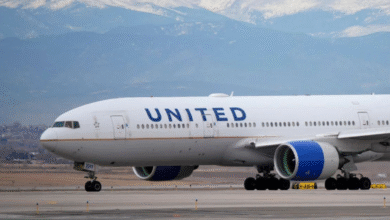Daskusza Exploration: Unveiling the Hidden World Beyond the Maps

Discover the enigmatic journey of daskusza exploration — its origins, methods, debates, and impact. A deep dive into hidden realms, modern technology, cultural mysteries, and what lies ahead.
In the realm of mysteries and uncharted frontiers, daskusza exploration stands out as a concept that beckons the curious heart. It is more than a quest for new maps or remote territories—it is an invitation to probe the edges of what we know, to peel back layers of time, nature, and imagination. In many ways, daskusza exploration becomes a mirror: what we seek out there often reflects what we yearn to understand within ourselves.
The term “daskusza” is still fresh, enigmatic, and evolving in usage. Some use it to describe lost lands tucked between cultural boundaries. Others use it metaphorically, invoking it to speak of intellectual or emotional frontiers. Yet, across these interpretations, a core spirit persists: exploration driven by wonder, by the urge to discover what lies beyond the seen. This article is my attempt, presenting as someone deeply fascinated by unknown worlds, to bring together what is known (and speculated) about daskusza exploration—its roots, its methods, its controversies, and its promise.
In what follows, I will walk you through how daskusza exploration has taken shape, what drives it forward today, how technology and culture intersect in it, and where it might lead us next. I’ll also respond to common questions and theories, and at the end give a concise conclusion. My aim is to make this readable by anyone hungry for wonder, yet substantive enough that even fellow explorers may find new threads to consider.
What Is Daskusza Exploration?
To begin a journey, one must know where they stand. So, what exactly is daskusza exploration?
At its heart, daskusza exploration is an approach (an attitude, even) toward realms—geographical, cultural, intellectual, emotional—that remain hidden, obscured, or insufficiently understood. It is the pursuit of places or ideas that resist easy classification. In some accounts, daskusza refers to a remote physical region shrouded in myth. In others, it is a metaphor for pushing boundaries in science, art, or consciousness.
In popular references, daskusza exploration often appears as the investigation of shadowy geographies—valleys, mountain zones, forgotten ruins—that may have escaped documentation in historical records or modern surveys. Those who adopt the term often emphasize that daskusza is not simply “undiscovered land,” but land that has been hidden in memory, mis-mapped, or deliberately concealed. The exploration is also about restoring voice to what the maps have ignored.
But daskusza exploration is not exclusively about terrain. Many thinkers use it to describe the act of exploring new ideas, reframing known problems, or delving into inner landscapes of meaning. In that metaphorical sense, daskusza exploration can be about charting one’s own psyche, crossing disciplinary boundaries, or uncovering latent connections in seemingly disparate domains.
In practice, then, daskusza exploration sits at the intersection of multiple traditions: the classical sense of exploration (mapping, field study), the mythic impulse (searching for the lost), and the modern intellectual frontier (innovation, interdisciplinarity). A defining feature is that it resists simple reduction: it is part archaeology, part philosophy, part scientific inquiry, and part poetic vision.
The Spirit Behind the Term
What distinguishes daskusza exploration from generic “adventure” or “discovery” is its emphasis on liminality—the threshold between known and unknown. It is not just about exploring remote terrain, but tracing the transition zones: the edges of empires, forgotten borderlands, places where linguistic or cultural boundaries blur, or ideas that lie just beyond accepted thought.
Many enthusiasts of the concept describe daskusza as a “space of wonders waiting to be decoded.” The spirit behind invoking “daskusza” is curiosity keyed to humility: an acknowledgment that what we perceive as blank or unknown may already hold stories, shadows, echoes. The explorer’s role is not just to conquer the unknown, but to listen, to piece fragments, to dialogue with what resists naming.
Another aspect of the spirit is collaboration: because the unknown often spans multiple fields (geography, history, biology, anthropology), daskusza exploration tends to invite multi-disciplinary teams, combining satellite imagery, drone surveys, oral traditions, linguistics, and even creative speculation. It is often a community effort rather than a solo hero’s quest.
In short, daskusza exploration is the mode by which we engage mystery respectfully, systematically, and imaginatively.
Historical Roots and Myths Surrounding Daskusza
No concept emerges fully formed. Daskusza exploration, too, appears to carry echoes from older myths, legends, and historical projects of mapping and hidden worlds. To appreciate its resonance, we can look into potential roots and the myths that surround it.
Mythic Echoes and Oral Traditions
Throughout many cultures, there are tales of hidden valleys, guarded mountain enclaves, subterranean cities, or secret corridors connecting disparate lands. The legends often speak of a place untouched by conquest, where time slows, knowledge is preserved, and nature (or the sacred) reigns. Daskusza exploration draws upon this deep archetypal reservoir.
In some remote mountain societies, oral traditions mention “lands beyond the pass,” “ancient guardians,” or “cradle of forgotten wisdom.” These narratives may not name Daskusza directly, but they provide a substrate for mythic imagining—a cultural environment that suggests hidden spaces waiting to be rediscovered. Some proponents suggest that references in old travel logs, pilgrimage routes, or cryptic poetic verses might encode allusions to what we now attempt to call Daskusza.
The imaginative pull of these myths helps anchor daskusza exploration in collective memory. It gives a poetic license to see cracks in the map, survey shadows, and follow threads of possibility. The myths also raise caution: they sometimes exaggerate, fold in symbolism, or regional bias. But when combined with careful scholarship, they provide useful leads.
Early Explorers and Lost Cartographies
Historically, cartography has always had “terra incognita” zones—regions that mapmakers left blank, hedged with inscriptions like hic sunt dracones (“here be dragons”). In old Europe and Asia, certain mountain passes or border areas were poorly understood, due to inaccessibility or political restrictions. Over time, many of those blanks got filled; some remained ambiguous.
In some nineteenth and early twentieth-century explorer journals—particularly those focused on Central Asia, the Caucasus, or remote plateaus—one occasionally finds accounts of elusive valleys, persistent local rumors, or ruins uncorrelated with known maps. These faint traces sometimes become reference points for daskusza seekers today. Some modern proponents examine old maps, compare them across time, and look for recurring anomalies—paths that vanish, river branches that appear to dead-end, place names that shift in local dialects. They argue that hidden corridors or mis-recorded expansions might hint at deeper structures.
Yet it is important to note: no confirmed, universally accepted “Daskusza site” has been established to date. The historical roots remain speculative. The power of the idea lies partly in that gap—where romance meets reason, and where inquiry may yet yield surprises.
Scholarly Skepticism and the Boundary of Myth
Of course, any serious effort around daskusza exploration must contend with skepticism. Some scholars dismiss it as romantic mythmaking or a rebranding of lost land speculation. They warn that attributing too much weight to folklore or map oddities can lead explorers astray or give credence to fanciful tales without critical evaluation.
One common criticism is confirmation bias: the tendency to fit new data into a desired narrative of hidden lands. Another is misinterpretation of old documents or cartographic errors. Still another is that some narratives of Daskusza may have been deliberately invented or exaggerated by past travelers for fame or mystique.
A responsible approach, then, treats daskusza exploration not as a quest for myth adherence, but as a disciplined search integrating myth, data, critique, and openness. The historical roots provide hypotheses, not fixed claims.
Geographic Theories: Where (Might) Daskusza Lie?
If daskusza is more than metaphor, one natural question is: where could it be? While no definitive answer exists, several theories and models propose plausible zones or frameworks. Here’s a survey of key ideas.
Zones of Ambiguity in Eurasia
Because much of the discourse around Daskusza comes from Europe and Asia, many explorers look to border territories, tectonic junctions, or transitional highlands between well-mapped regions. Some suggest:
- The high mountainous border zones between Central Asia (e.g. Tajikistan, Kyrgyzstan) and adjacent regions. Rugged terrain, shifting political borders, and limited historical survey make this plausible.
- Parts of the Caucasus or lesser-studied ranges between the Black Sea region and the Caspian basin. These zones have cultural complexity and poorly mapped pockets.
- Remoter parts of Eastern Europe, where forested plateaus and old borderlands might have resisted thorough mapping earlier.
- Transitional zones between glaciated mountain chains and steppe — areas where climate, vegetation, and human habitation shift, making mapping challenging.
Each candidate region has pros and cons: access difficulties, political sensitivity, or mismatch between legend and terrain.
Landscape Clues and Remote Sensing
Modern remote sensing techniques give us new tools to test hypotheses. Some daskusza explorers mine satellite imagery, LIDAR maps, and topographic anomaly maps to look for:
- Valleys or “hidden enclaves” that are insulated by ridgelines or fault zones.
- Discontinuities in drainage patterns, places where rivers disappear or run underground.
- Vegetation anomalies: patches of forest or meadow within unexpected climatic zones.
- Ancient terraces, wall-like ridges, or structure remnants that do not align with current settlement patterns.
In some expeditions, teams have flagged zones in the Hindu Kush or remote plateaus where the geography and shadow signatures roughly match descriptions from old logs. But no conclusive “this is Daskusza” marker has yet emerged. The exercise is ongoing and provisional.
A Model of Overlapping Boundaries
Another useful way to conceptualize Daskusza is not as a single fixed point, but as a region of overlapping boundaries—a shifting zone that lies between cultural realms, environmental transitions, and historical trade routes. In this model, Daskusza is not located at a fixed coordinate, but exists where multiple uncertainties converge. It is a borderland, a margin, a space of transitions.
That framing can incorporate the idea that local communities may know portions of it under different names, or that the “hidden” parts may be spread across a cluster of enclaves. It helps reduce the pressure to find one rigid site, and encourages collaborative mapping of multiple candidate zones.
Natural Wonders, Ecology & Hidden Biodiversity
One of the great promises of daskusza exploration lies in what remains unseen in nature—ecosystems, species, microclimates, and interactions that conventional surveys may not capture. Let’s look at the ecological side of the quest.
Microclimates & Ecological Niches
Because many candidate Daskusza zones lie in transition terrains—between alpine and forest zones, between wet and dry climatic zones—they often harbor a high diversity of microclimates. Small elevation changes, shading by ridges, or water seepage can create pockets where species thrive outside broader expected ranges.
In these microclimates, rare plants, mosses, lichens, or amphibians may persist. Endemic species—those found nowhere else—are more likely in such sheltered, under-surveyed zones. Some daskusza explorers argue that medicinal plants, genetic variants, or insect lineages may yet lie undiscovered in these margins.
Because much of modern ecological survey concentrates on accessible terrain or broader zones, these hidden pockets may be overlooked. Daskusza exploration, then, becomes a targeted hunt for ecological outliers—species or interactions that stretch known patterns.
Wildlife, Refuge, and Conservation Potential
Remote, underexplored regions often become inadvertent refuges for wildlife in an age of human encroachment. In candidate Daskusza zones, one can imagine corridors for large mammals (e.g. mountain ungulates, big cats, wolves) or rare birds that avoid disturbance. Because such zones may have low human population density, lower roads, and fewer development pressures, they can sustain relatively intact food webs.
If one day a confirmed Daskusza region is established, it could become a conservation priority—a protected zone with special status, harboring species that have escaped detection. In that way, daskusza exploration carries both scientific intrigue and environmental urgency.
Interdisciplinary Field Ecology
To maximize the ecological payoff, daskusza exploration typically requires interdisciplinary field teams: botanists, zoologists, soil scientists, climate modelers, and geneticists. When a candidate site is identified via remote sensing, an expedition might deploy:
- Vegetation transects and sampling
- Soil cores and microbial assays
- Camera traps and acoustic sensors for wildlife
- Genetic barcoding to detect cryptic species
- Climate loggers to record micro-weather patterns
By overlaying these data, explorers hope to build a rich ecological map—not just of what grows or lives there now, but of how the ecosystem has evolved, how stable zones persist, and how it may respond to climate shifts.
Tools, Technology & Techniques in Daskusza Exploration
The modern age has given daskusza explorers a far more powerful toolkit than those in past centuries. To approach the hidden requires not only bold spirit but precise instruments. Here is a survey of key technological and methodological strategies currently in use or under development.
Remote Sensing, LIDAR & Satellite Imagery
One of the first steps in identifying candidate zones is scanning from above. High-resolution satellite imagery helps identify anomalies in terrain or vegetation. LIDAR (Light Detection And Ranging) can penetrate tree canopies, revealing the shape of underlying land and possible ruins or terraces hidden beneath forest cover.
Researchers can compare multi-temporal images to look for subtle shifts in vegetation, water flow changes, glacial retreat, or seasonal flooding that may hint at buried features. Synthetic Aperture Radar (SAR) imagery can also pick out moisture anomalies underground or beneath canopy, revealing subterranean shapes.
By cross-referencing these data layers, daskusza exploration becomes a process of filtering for zones that “look suspicious” and merit a ground check.
Drones, Unmanned Systems & Sensors
Once a high-potential zone is located, drones become invaluable. They can fly patterns over difficult terrain, capture HD images, thermal maps, multispectral imagery, and LIDAR scans at lower cost than manned flights. Swarms of drones can map extended zones rapidly. Some drones may even carry miniature ground-penetrating radar or miniature spectrometers.
Unmanned ground vehicles or robotic rovers may also assist in places too steep, dangerous, or remote for people. They can carry sensors, sample tools, and transmit mapped data back to base.
On-site Field Instruments & Sampling
On the ground, classical instruments remain essential: GPS units, geological hammers, soil augers, microscopes, water probes, magnetometers, and metal detectors. Compact field labs may include DNA extraction kits or environmental DNA (eDNA) tools to sample nearby streams or soils and detect species traces.
Ground-penetrating radar is used to scan subsurface features—cavities, buried walls, tunnels. Seismic sensors may map underground strata or fault lines. Coupled with drone topography, these tools help triangulate possible human artifacts or hidden chambers.
Data Integration, AI & Predictive Modeling
One of the most powerful shifts is in data integration. Raw images, sensor readings, local oral lore, old maps, climate data, and even ethnographic clues can be fed into AI models that detect patterns humans might miss. Machine learning algorithms can highlight anomalous zones, suggest where ruins might lie, or predict microclimate transitions.
Moreover, predictive modeling can simulate glacial movement, erosion, or vegetation succession to estimate how hidden features may have shifted. The insight can help prioritize where a physical expedition should go.
Citizen Science, Open Platforms & Crowdsourced Mapping
Because daskusza exploration straddles myth and data, many projects now open their prerequisites to broader collaboration. Enthusiasts, hikers, or local residents may contribute GPS tracks, drone photos, or voiced legends. Platforms such as decentralized mapping, open archives, or shared sanctuaries allow many eyes on anomalies, more cross-checking, and faster iteration.
In this way, daskusza exploration is democratized: it is no longer just the domain of elite explorers but also of curious people with smartphones, satellite access, or local knowledge.
Cultural, Anthropological & Linguistic Dimensions
For any region—even a hidden one—exploration is not complete without engaging the cultural, linguistic, and human stories that may dwell in or around it. Daskusza exploration, to realize its full promise, must integrate these dimensions.
Oral Histories & Indigenous Knowledge
One of the richest veins for daskusza seekers is local memory. In many remote border areas, elders or traditional storytellers may hold tales of lost valleys, sacred caves, ancestral sites, or migratory rhythms. These stories, though sometimes symbolic, often embed hints—place names, directional clues, seasonal patterns—that can orient explorers.
Collecting oral traditions requires careful ethnographic methodology: building trust, respecting taboos, interpreting metaphor, and cross-referencing multiple versions. Sometimes legends that appear fanciful contain kernels of geography, now obscured by name shifts or land use changes. The trick is to triangulate: if several communities refer to “the hidden spring beyond the green ridge,” that phrase may align with a real watercourse.
In some daskusza projects, local youth have become co-investigators, helping map legends onto terrain, identify old place-names, or carry drone missions. That collaboration grounds exploration in respect, reciprocity, and co-custodianship.
Linguistic Layers & Etymological Clues
Because hidden regions often fall between language zones, place names may carry layers of etymology: older substratum languages, dialect shifts, loan words, or hybrid forms. A ridge known locally in one tongue might have an older name in a displaced dialect. Linguistic clues—sound shifts, root words, cognates—may encode hints of migration routes or forgotten naming.
For example, a name like Das-ku or Dusza in different dialects might map to “ridge,” “valley,” or “hidden spring.” Linguists working in daskusza exploration may analyze local lexicons, compare them with adjacent regions, and trace anomalies or “orphaned words” that don’t match typical patterns.
If an archaeologist finds inscriptions or petroglyphs in such zones, comparing them to extinct scripts or neighboring dialects may yield insight into historic connections or cultural overlap. Such linguistic work can help anchor a daskusza zone in cultural networks rather than leaving it purely geographic.
Material Culture, Ritual Spaces & Archaeology
If daskusza zones harbor human activity—past or ongoing—explorers look for artifacts, ruins, rock art, ritual stones, or burial sites. Even fragmented ceramics, stone tools, or petroglyphs yield clues. Archaeologists must carefully excavate, map, and date findings. Radiocarbon or luminescence dating may situate objects in time.
Ritual or sacred geometry (alignments, stone circles, orientations) might betray spiritual practices. If local communities still maintain shrines or sacred groves near the margins of hidden zones, mapping them and integrating their orientation or stories could help reconstruct site significance.
The cultural dimension ensures that daskusza exploration is not a sterile search for “ruins,” but a guiding inquiry into how people inhabited, remembered, and shaped those margins.
Theories, Speculations & Controversies
Between the documented and the imagined lies a zone rich with speculation. Daskusza exploration, because it treads unknown ground, attracts both visionary theories and tough criticism. Here’s a balanced look at what is embraced, what is contested, and the debates around it.
Grand Theories & Speculative Hypotheses
Some daskusza proponents propose sweeping ideas:
- Lost Civilization Hypothesis: That Daskusza was once the core of an ancient civilization that predated known regional powers, preserving knowledge of lunar calendars, astronomical observation, natural medicine, or geometric arts. According to this line, remnants might exist in ruins, glyphs, or underground chambers.
- Ecological Ark Hypothesis: That Daskusza zones functioned as climatic refugia during past Ice Ages, preserving species beyond glacial reach. Thus their biota may be genetic relics or living fossils.
- Tectonic Nexus Hypothesis: That Daskusza sits at the junction of tectonic fault lines, making it a site of geothermal energy, mineral richness, or undiscovered strata. Some envision it as a site for future energy breakthroughs.
- Psychogeographic Hypothesis: That Daskusza is also symbolic—its borders shifting in human awareness, memory, and map consciousness. In this view, daskusza exploration is as much about reconstructing lost cartographies in the mind as it is about terrain.
These high theories are imaginative and alluring. But they demand caution, critical scrutiny, and grounding in data.
Skeptical Perspectives & Red Flags
Scholars and cautious explorers raise several challenges:
- Myth vs. Reality: Legends may distort or conflate places. Blindly chasing myth might lead to chasing ghosts.
- Interpretive Overreach: Weakly aligned structures, hillocks, or rock outcrops might be misinterpreted as ruins.
- Confirmation Bias: The human tendency to see patterns where none exist can mislead.
- Ethical Dangers: Overenthusiastic exploration may disrupt ecosystems or indigenous communities. Sudden exposure can bring disease, displacement, or cultural loss.
- Resource Conflict: If a daskusza zone turns out to hold valuable minerals or resources, its discovery might provoke exploitation rather than preservation.
One responsible posture is to treat daskusza not as certain treasure, but as zones of hypothesis. Every “site” must undergo rigorous validation, peer review, and internal critical checks. Exploration should proceed incrementally, with strong ethical protocols.
Bridging Speculation and Evidence
The tension between speculation and evidence is part of what makes daskusza exploration compelling. When theories guide exploration, they must also be subject to falsification. Explorers may frame multiple hypotheses, test them via remote imaging, ground checks, sensor data, and cross-validation with local lore and linguistic data.
A promising zone might generate several candidate models (e.g. “this is a hidden enclave,” “this is a ritual site,” “this is an ecological refuge”). Each model predicts what you might find (plant types, artifact layer, water flow). The expedition tests those predictions. Over time, the zone is refined, some models dropped, others strengthened.
In that iterative cycle, speculation fuels inquiry but is kept honest by empirical checks. That is the fertile ground wherein daskusza exploration can move from mythic longing to responsible discovery.
Planning a Daskusza Expedition: From Vision to Field
If someone seriously wishes to mount a daskusza exploration, what are the practical steps? The journey from remote hypothesis to fieldwork involves careful planning, logistics, and foresight. Here’s a roadmap.
Phase One: Preliminary Survey & Hypothesis Building
- Data Collection: Gather historical maps, old traveler journals, regional place names, local legend records, and prior expedition logs.
- Remote Imaging: Use satellite imagery, LIDAR datasets, SAR, and topographic maps to scan candidate zones.
- Data Integration & Modeling: Use GIS and AI to merge layers, flag anomalies, and generate candidate zones ranked by plausibility.
- Local Consultation: Contact neighboring communities, local historians, or scholars to refine place name leads, gather oral maps, and gauge access feasibility.
- Permits & Risk Assessment: Research political, environmental, and legal constraints. Secure necessary permissions, and assess safety, climate, health risks, and logistics.
Phase Two: Field Reconnaissance
- Advance Team Deployment: Send a small reconnaissance team (two to five persons) to validate access, set base camps, scout terrain, and test mobility.
- Drone / Aerial Mapping: Launch drones to produce high-resolution maps, record anomalies, and identify points of interest.
- Ground Sampling & Sensors: Lay microclimate loggers, take soil cores, do eDNA sampling, deploy camera traps, and run minimal geophysical scans.
- Local Liaison & Guides: Engage local guides and community members to explore hidden footpaths, legends, or overlooked valleys.
- Adaptive Strategy: Based on initial findings, refine path plans, adjust priorities, and relocate survey focus.
Phase Three: Intensive Exploration & Mapping
- Survey Teams: Split into parallel teams—botanical, geological, cultural/archaeological—to explore zones of interest concurrently.
- Detailed Mapping: Use combined drone, LIDAR, ground-penetrating radar, and manual plotting to produce high-resolution maps.
- Excavation or Test Pits: If promising structures or deposits are found, dig small test pits with careful stratification and documentation.
- Artifact and Sample Handling: Catalog, date, and preserve any finds—minerals, pottery shards, bone fragments, or crystals—ensuring chain of custody.
- Local Workshops & Knowledge Exchange: Hold workshops with local communities to share findings, record indigenous names or stories, and integrate local insights.
Phase Four: Analysis, Publication & Stewardship
- Laboratory Analysis: Process samples for carbon dating, DNA sequencing, geological assays, spectrometry, etc.
- Cross-disciplinary Review: Bring together experts (ecologists, anthropologists, geologists) to interpret findings in concert.
- Open Data & Transparency: Publish maps, datasets, field notes (where possible) for peer review and collaborative critique.
- Conservation Planning: If the region proves ecologically or culturally sensitive, design guidelines for preservation.
- Ongoing Monitoring: Maintain presence (or remote sensors) to track ecological changes, human impact, and ensure respect for local rights.
Throughout these phases, flexibility, humility, and community engagement are vital. Surprises abound. The most profound discoveries may come not from meeting expectations, but from following curiosity where it leads.
The Impact and Value of Daskusza Exploration
Why invest time, money, and passion into daskusza exploration? The value is multi-layered: scientific, cultural, environmental, and symbolic. Here I unpack potential impacts.
Advancing Science & Knowledge
Any confirmed finding—new species, geological structure, ancient artifacts—expands human knowledge. Some possible scientific gains include:
- New medicinal compounds from plants or microbes in hidden niches
- Insights into climate history via sediment cores or glacial data
- Geological clues about tectonic activity, fault evolution, or mineral deposits
- Archaeological links that reshape migration models, linguistic genealogy, or trade routes
These gains can ripple far beyond the region itself.
Environmental Conservation & Climate Insight
If daskusza zones are ecological refugia, they may serve as natural laboratories for climate change resilience. Protecting such zones can preserve species that act as genetic reservoirs. Understanding how microclimates remain stable over time can inform conservation planning elsewhere. Moreover, cataloging biodiversity in such zones fills gaps in global species records, which is critical in the age of biodiversity loss.
Cultural Recognition & Heritage
By integrating local oral histories and indigenous knowledge, daskusza exploration can help communities recover or reclaim lost heritage. Ritual sites, place names, or traditions that were forgotten or marginalized may come into renewed awareness. When done ethically, it offers communities agency and voice in how their landscapes are represented and preserved.
Inspiring Wonder & Intellectual Culture
Hidden worlds have always fueled inspiration—myths, art, philosophy, science fiction. Daskusza exploration continues that lineage. It invites us to see how much remains unknown, to maintain humility, and to keep curiosity alive. It can invigorate younger scholars, artists, and explorers to cross disciplinary boundaries.
Risks, Ethical Challenges & Responsible Stewardship
With impact comes responsibility. Some risks include:
- Overexposure or commercialization that harm delicate ecosystems or local cultures
- Resource exploitation (mining, logging) following “discovery”
- Cultural disruptions—if contact with isolated groups is mishandled
- Intellectual appropriation—extracting knowledge without benefiting local people
To maximize value and minimize harm, daskusza projects must embed ethical frameworks: benefit sharing, informed consent, long-term stewardship, environmental safeguards, and open scholarly review. Discoveries should not be a trophy, but a stewardship pact.
Case Examples & Hypothetical Scenarios
To illustrate how daskusza exploration might unfold in practice, let me sketch a few scenarios and lessons (drawn partly from speculation, partly from analogous real-world projects).
Case Scenario: Hidden Valley in the Northern Highlands
Imagine a mountainous region between two geopolitical zones, with sparse population and limited infrastructure. Drone imagery reveals a roughly circular valley enclosed by ridges, with anomalous green patches in the midst of generally dry slopes. Locals in adjacent villages tell of a “valley of echoes” where winds hum and hikers disappear. They once spoke of ruins that local elders call “stone whispers.”
An expedition is launched. Ground sensors detect scarce water seepage, LIDAR reveals terrace outlines, and tiny fragments of pottery are found in a washed-out gully. Simultaneously, eDNA sampling in a spring suggests a rare amphibian previously unseen in the region. A small stone slab inscription, fragmentary, contains characters that match an extinct script known in neighboring regions.
Over subsequent seasons, the team refines the mapping, uncovers possible walls at the ridge edge, and dates ceramics to a few centuries BCE. Conversations with local elders shed new place names. The valley gradually emerges as a candidate Daskusza enclave, a once-hidden site at the intersection of ecology, history, and myth. Researchers publish open maps. The local community becomes official co-custodians, designing paths and preserving habitat.
Lessons: synergy of legends + modern tech; patient incremental validation; ethical community inclusion.
Analogy: Remote Rainforest Expeditions
In other parts of the world, rainforest teams using LIDAR have discovered ancient cities hidden under forest canopies previously invisible. In Cambodia, LIDAR revealed extensive city ruins beneath dense foliage. In Amazonia, scientists found complex earthworks and community networks previously unknown. These ventures share features with daskusza exploration: hidden structures, lost settlements, integration of remote tech with field archaeology.
Such analogous successes validate the approach: that places thought blank on maps may hold surprising human presence. They also teach caution about false positives, the need for ground truthing, and the value of preserving—rather than exploiting—the discoveries.
Frequently Asked Questions (FAQs)
Q: What distinguishes daskusza exploration from traditional geographic exploration?
A: Traditional geographic exploration often targets “unmapped lands” or frontiers known in broad strokes but untraversed. Daskusza exploration, by contrast, emphasizes marginal, hidden, or ambiguous zones—places lying at the boundary of known and unknown, combining geography with cultural, mythic, and intellectual dimensions. It is not just mapping spaces, but restoring neglected or erased spaces of memory, ecology, and narrative.
Q: Has any confirmed Daskusza site ever been found?
A: To date, there is no universally accepted, definitively proven site identified as “Daskusza.” The concept remains a living hypothesis. Many candidate zones have been proposed and partially explored, but none has passed all the rigorous tests of multi-disciplinary verification. That state is part of what gives daskusza exploration its continuing allure and challenge.
Q: Are there risks in pursuing Daskusza exploration?
A: Yes. Risks include environmental damage (trampling, sample overcollection), disturbance of cultural or sacred sites, exploitation by outside interests, and miscommunication with local communities. To mitigate these, ethical protocols, community partnerships, minimal impact practices, and transparent data sharing are crucial.
Q: How can someone inexperienced contribute to or follow Daskusza exploration?
A: Many projects adopt citizen-science models. Enthusiasts can assist by: analyzing satellite imagery, flagging anomalies, collecting local aerial or ground photos, contributing oral histories, helping local mapping, or participating in data review. Even without going into remote zones, many meaningful contributions lie in analysis, cross-disciplinary synthesis, or ethical oversight.
Q: What kinds of equipment are essential for a Daskusza expedition?
A: Key tools include high-resolution satellite imagery or access to LIDAR, drones with multispectral or thermal sensors, GPS units, ground-penetrating radar, soil and water sampling kits, microclimate loggers, camera traps, eDNA kits, field labs (compact), and data integration software (GIS, AI models). But as always, technique and care outweigh tools.
Q: How should explorers engage with local communities when mapping a Daskusza zone?
A: Engagement should follow principles of respect, consent, equal voice, knowledge reciprocity, and benefit sharing. Before mapping, explorers must consult local elders, explain goals transparently, ask permission for access, offer capacity-building (training, data access), and ensure that any findings return value to local stakeholders (education, recognition, resources). Co-designing stewardship plans is ideal.
Conclusion
Daskusza exploration is at once a call to mystery and a commitment to rigor. It invites us to peer beyond the edges of maps, to reopen forgotten corridors of ecology and culture, and to calibrate curiosity with humility. While it teeters between myth and method, its most important legacy may be the habit of wonder itself.
If we proceed ethically—with open data, local partnership, scientific integrity, and conservation in mind—daskusza exploration can transform not just what we know, but how we relate to what was hidden, neglected, or forgotten. The next decade may yet unveil zones where the map’s blank spaces yield life, stories, and new insights.




